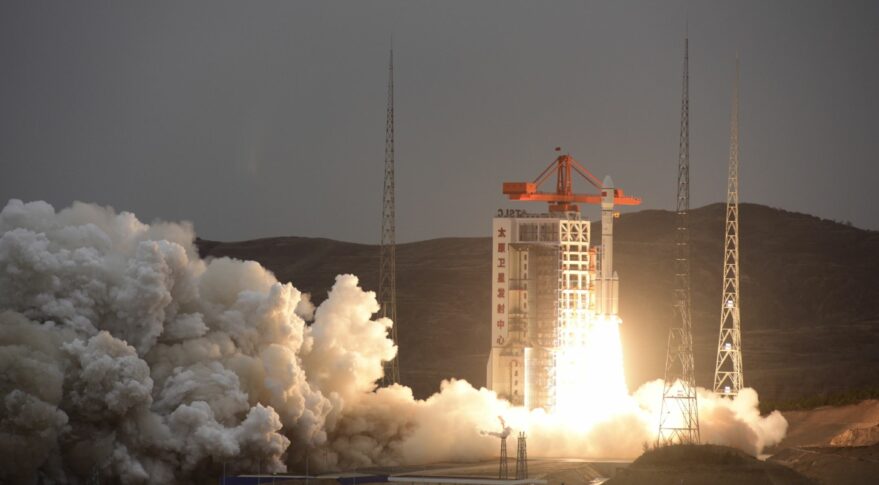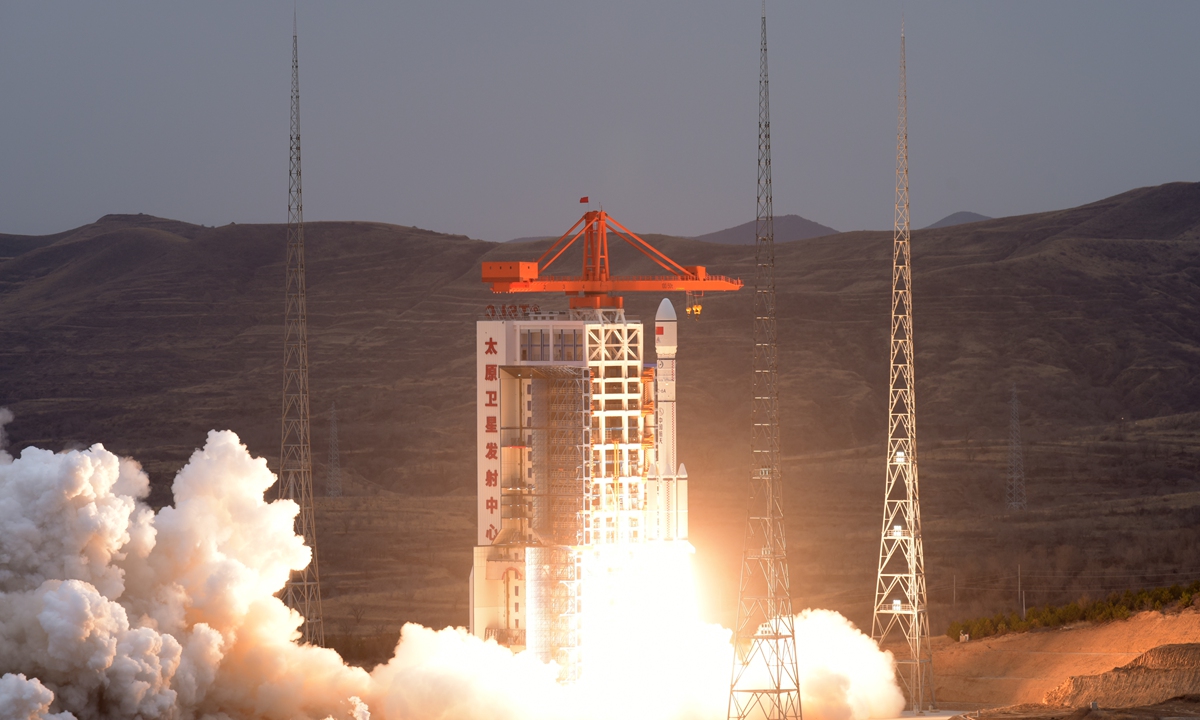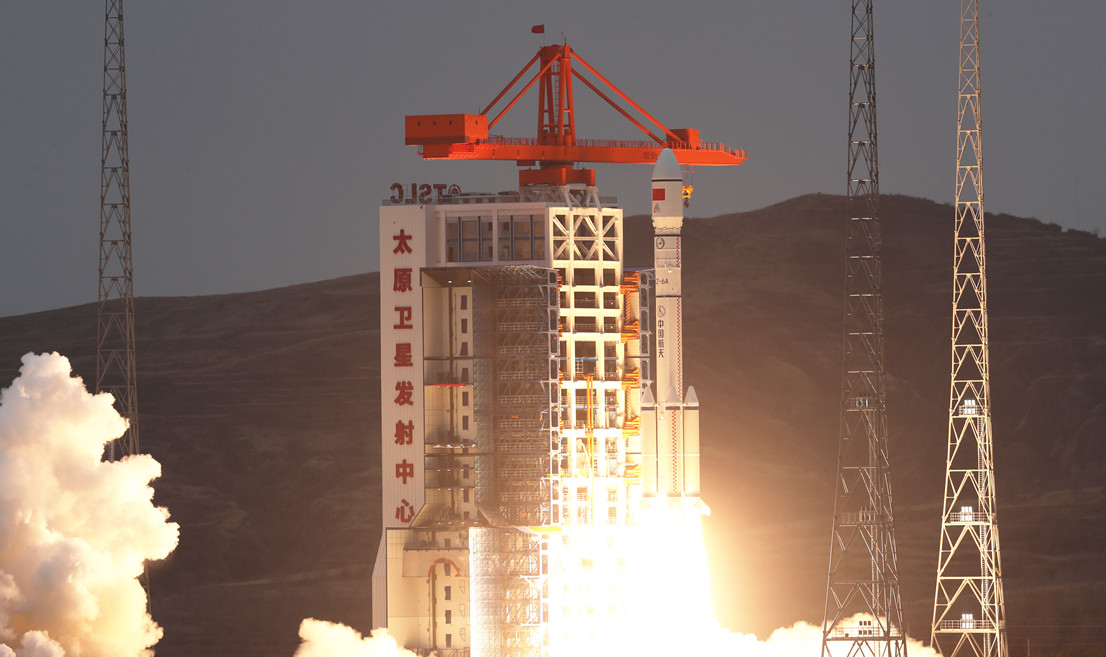Nowa wersja chińskiej rakiety 29.03. o 09:50 z Taiyuan wystrzelony został pierwszy egzemplarz RN CZ-6A, która umieściła w T+12' 06" na orbicie satelity Tiankun-2 i Pujiang-2.
http://lk.astronautilus.pl/n220316.htm#06The first launch of Long March-6AChina launches first Long March rocket with solid boostersby Andrew Jones — March 29, 2022
 Liftoff for the first Long March 6A from a new launch complex at Taiyuan, north China, March 29, 2022. Credit: Ourspace/CNSA
Liftoff for the first Long March 6A from a new launch complex at Taiyuan, north China, March 29, 2022. Credit: Ourspace/CNSAHELSINKI — China launched its first Long March 6A from a new launch complex at Taiyuan Tuesday, successfully sending two satellites into sun-synchronous orbits.
Source:
https://spacenews.com/china-launches-first-long-march-rocket-with-solid-boosters/China’s new rocket makes successful maiden flightPublished: Mar 29, 2022 06:21 PM
Shanghai-based firm rejoices victory amid COVID flare-up, breakthroughs of hybrid propellant
By Deng Xiaoci A Long March-6A carrier rocket takes off from the Taiyuan Satellite Launch Center for its maiden flight on March 29, 2022. Photo: Sun GongmingLong March-6A, China's new-generation medium-sized launch vehicle, conducted a successful maiden flight at 5:50 pm on Tuesday from Taiyuan Satellite Launch Center in North China's Shanxi Province, sending two satellites into preset orbits.
A Long March-6A carrier rocket takes off from the Taiyuan Satellite Launch Center for its maiden flight on March 29, 2022. Photo: Sun GongmingLong March-6A, China's new-generation medium-sized launch vehicle, conducted a successful maiden flight at 5:50 pm on Tuesday from Taiyuan Satellite Launch Center in North China's Shanxi Province, sending two satellites into preset orbits.
The rocket is developed by the Shanghai Academy of Space Technology (SAST), a subordinate of the state-owned China Aerospace Science and Technology Corporation (CASC). The successful launch marked the first victory of SAST new rocket type development in the 14th Five-Year Plan (2021-25). Developers said the news was a confidence boost as Shanghai is struggling with a COVID-19 flare-up.
At launch, the rocket has a weight of 530 tons and is capable of sending payload of no less than 4 tons to the Sun-synchronous orbit. The new member of the Long March carrier rocket family is 50 meters in height and has two 3.35-meter-diameter stages with the first adopting a 120-ton-thrust liquid oxygen/kerosene engine and a 18-ton-thurst one for the second, said a statement the SAST provided to the Global Times on Tuesday.
Marking a design breakthrough in the country's aerospace history, the new rocket has four 2-meter-diamter solid-propellant boosters attached to its body, developers said. The boosters also have two stages and have a thrust of 120 tons, which are developed by the Fourth Academy of the CASC.
It is the first rocket type that has realized a cooperation of liquid and solid engines in China, clearing key technical barriers such as the solid boosters attachment and detachment technology, developers said.
Such a hybrid-propellant technology would fully utilize the advantages of the two systems - the liquid engine has long working hours with high performance while the solid one has more powerful thrust and better reliability and is easy to maintain. The birth of the Long March-6A would further enrich the type of spectrum of China's rockets, enhancing China's capability in space exploration, analysts pointed out.
Adopting a similar technological path, the US Atlas 5, Europe's Ariane 5 and H-2A of Japan have performed several successful flights. However, it was a first for a Chinese rocket in active service to perform a flight with solid boosters, developers added.
The Long March-6A could also enable rapid launches with preparations of only 14 days thanks to the newly built launch site at the Taiyuan Center, which will meet the highly frequent launch requirement to the medium and low orbit satellites, insiders said.
According to the developers, the Long March-6A also adopted a range of new technologies used at launch such as the "unattended operation" that started four hours before the blast-off, enhancing safety.
To make the "unattended operation" a reality, the rocket must perform an automatic docking and fueling via remote control, the rocket ground connector should also automatically fall off at the moment of take-off and once the propellant injection starts, it requires no personnel to watch over at the launch pad, which all marked firsts in China.
Hong Gang, the rocket type's commander-in-chief, told the Global Times on Tuesday that as the rocket is developed in a path of modularization, combination and modularization, it could also come in different variants according to the mission demand such as ones without boosters or other forms with two boosters.
The Tuesday flight marked the 412nd mission of China's Long March rocket family.
The rocket sent Tiankun-2 and Pujiang-2 satellites into their designated orbits on Tuesday.
Tiankun-2 is a new technology experiment satellite developed by the Second Academy of China Aerospace Science and Industry Corporation (CASIC), and its developers told the Global Times on Tuesday that it could provide a range of services such as space science exploration.
Inheriting the high functional density of Tiankun-1, the first experimental satellite independently developed by CASIC, which was sent into orbit in March 2017, Tiankun-2 has lower manufacturing costs and is smaller in size.
The Tiankun-2 is tasked with verifying key technologies such as new attitude and orbit control algorithms, multi-functional flexible cladding materials, and computational optical imaging, satellite developers revealed. Source:
https://www.globaltimes.cn/page/202203/1257104.shtmlChina launches three space missions, debuts new rocket configurationApril 11, 2022 Stephen Clark
 China’s first Long March 6A rocket, with four strap-on solid rocket boosters, lifted off March 29 from the Taiyuan launch base. Credit: CASC
China’s first Long March 6A rocket, with four strap-on solid rocket boosters, lifted off March 29 from the Taiyuan launch base. Credit: CASCChina launched three more space missions in recent weeks, debuting the country’s first rocket to be fitted with strap-on solid-fueled boosters and deploying satellites to image planet Earth and calibrate orbit prediction models, according to Chinese state media.
A new version of China’s Long March rocket family, the Long March 6A, launched for the first time March 29 with two satellites. The Long March 6A is China’s first satellite launcher to feature solid rocket boosters, a thrust configuration commonly used on U.S., European, and Japanese rockets.
The new rocket variant is designed to haul payloads up to 4 metric tons, or 8,800 pounds, into a polar sun-synchronous orbit at an altitude of 700 kilometers, or 435 miles.
The first Long March 6A lifted off at 0950 GMT (5:50 a.m. EDT) on March 29 from the Taiyuan launch base, located in Shanxi province of northern China. Liftoff occurred at 5:50 p.m. Beijing time.
The 164-foot-tall (50-meter) rocket headed south to place its two payloads into a polar orbit. U.S. military tracking data indicated the Long March 6A deployed two satellites into an orbit around 373 miles (600 kilometers) above Earth, at an inclination of 97.8 degrees to the equator, according to publicly-available U.S. military tracking data.
The Long March 6A is a modified version of China’s Long March 6 booster, which flies without any strap-on boosters. The Long March 6A debuted a stretched first stage structure, and adds a second kerosene-fueled YF-100 main engine. With the four boosters and two main engines, the Long March 6A generates more than 1.6 million pounds of thrust at liftoff.
The basic Long March 6 rocket configuration flies with a single YF-100 engine. Chinese engineers also introduced a wider second stage for the Long March 6A, supplying additional propellant for the second stage’s YF-115 engine.
The greater propellant capacity and additional thrust gives the Long March 6A a payload lift capability nearly four times that of the Long March 6 rocket.
The China Aerospace Science and Technology Corp., or CASC, declared the launch a success in a statement. CASC is China’s largest state-owned aerospace contractor, and oversees the Shanghai Academy of Spaceflight Technology, or SAST, builder of the Long March 6 and Long March 6A rocket families.
The Long March 6A rocket carried the Pujiang 2 and Tiankun 2 satellites, CASC said.
Pujiang 2, developed by SAST, will “carry out scientific test and research, land and resources survey and other tasks,” according to China’s state-run Xinhua news agency. It follows the launch of the refrigerator-sized Pujiang 1 satellite in 2015, a mission designed to promote “smart city” development in China by monitoring weather, traffic, and population density.
Tiankun 2 will demonstrate a small spacecraft bus developed by China Aerospace Science and Industry Corp. It follows a small spacecraft named Tiankun 1 launched in 2017. [...]
https://spaceflightnow.com/2022/04/11/china-launches-three-more-space-missions-debuts-new-rocket-configuration/https://www.nasaspaceflight.com/2022/03/cz-6a-debut/Pujiang 2
https://space.skyrocket.de/doc_sdat/pujiang-2.htmTiankun 2 (TK 2)
https://space.skyrocket.de/doc_sdat/tiankun-2.htm